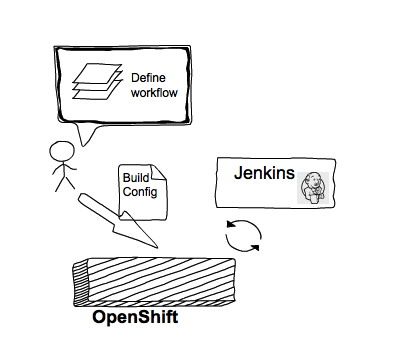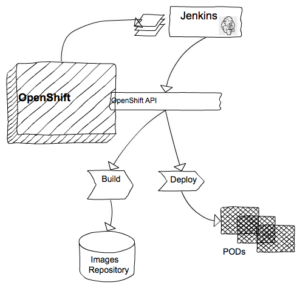Red Hat Fuse Integration Service 2.0 tech preview was released a few weeks ago and as it's based on Red Hat OpenShift 3.3, which has pipeline capability on top of it (tech preview on OpenShift as well), you are able to get one step closer to a more automated and agile continuous integration. As well as, a deployment one-stop platform for us, the integration developer.
For the pipeline to work on OpenShift, you need Jenkins installed and running. OpenShift uses it to build, process and handle all the workflows. If you are familiar with developing in OpenShift, building the pipeline is pretty simple and straight-forward. The pipeline is defined as a build configuration in OpenShift, just create a build config then import it to the namespace you want it to be in. And that is it.

This is what the build config looks like, note the strategy type is called JenkinsPipeline. This will trigger the interaction with Jenkins, and pushes the defined Jenkinsfile onto the server itself. The Jenkins Server will then interact with Openshift and start the automated CI/CD process.
kind: BuildConfig
apiVersion: v1
metadata:
name: pipelinename
labels:
name: pipelinename
spec:
triggers:
- type: GitHub
github:
secret: secret101
- type: Generic
generic:
secret: secret101
strategy:
type: JenkinsPipeline
jenkinsPipelineStrategy:
jenkinsfile: "
node('maven') {
stage('build') {
print 'build'
openshiftBuild(buildConfig: 'buildconfigname', showBuildLogs: 'true')
}
stage('staging') {
print 'stage'
openshiftDeploy(deploymentConfig: 'deploymentconfigame')
}
}"

This upper part of the blog is pretty generic to most of the applications running on OpenShift, and Fuse Integration Service is just another application running on top of it. But this application just simply contains PATTERN BASE integration technology that has 160+ built-in components in it, so we don't have to waste time and energy on repetitive stuff, no big deal. :)
No matter what version you are using, this pipeline capability can help you automate your integration microservice.
Here is a quick demo video that takes you through the entire process.
Last updated: August 31, 2023
